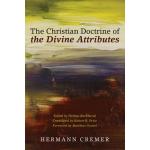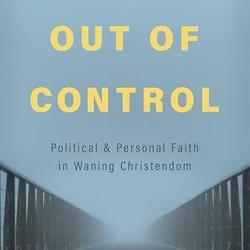A Mysterious Topic: “Mystery,” “Paradox,” and “Contradiction” in Theology (Part 1)
The average Christian, I suspect, thinks “mystery” is something beyond all comprehension; it’s what you’re supposed to believe but cannot be explained or even expressed except in ways that require sacrifice of the intellect. The classical examples most people would give are the Trinity and the deity and humanity of Jesus Christ (what theologians call the “hypostatic union”). And, when first introduced to the orthodox versions of those doctrines, many, if not most, theological novices object that these formulas are attempts to explain what is essentially unexplainable—the mysterious.
Furthermore, most Christians, in my experience, blend together inappropriately concepts such as “mystery,” “paradox” and “contradiction.” Of course, these are not easy concepts to pin down, but I think a sound theology needs to distinguish them and relate them to each other very cautiously to avoid total confusion and even unintelligibility.
That word “unintelligibility” will probably spark some controversy. Should Christian theology be intelligible?
Here’s the problem I wrestle with. Many Christians, even some theologians, confuse “incomprehensibility” with “unintelligibility.” I believe an important task of Christian theology is to make Christian belief as intelligible as possible without pretending that God (and the “things of God”) can be made completely comprehensible.
Defining terms is in order now. As I use “intelligible” I mean “capable of being understood and communicated without contradiction.” In other words, not esoteric. I believe Christianity, as a belief system, ought not to be esoteric. “Esoteric” means “capable of being understood only by special people with higher spiritual abilities.” It also usually implies something that should be believed but cannot be grasped by the mind’s normal functioning.
An example of something esoteric is astrology. In classical astrology (as opposed to many of its New Age versions), only special people with special spiritual wisdom and insight can grasp its truths and use it successfully. That’s why other people pay them.
There is an “alternative tradition” of “esoteric Christianity” going back to the Gnosticism. Its modern manifestations are lumped together as “theosophy” (including Anthroposophy).
(I won’t get into a discussion of the details of esoteric Christianity here. I only mention it to illustrate what I am opposed to as a Christian theologian in the Orthodox tradition. Suffice to say that I once spent a couple years studying Rudolf Steiner’s esoteric Christianity and wrote a scholarly article about it in a journal devoted to new religious movements.)
I admit to being allergic to anything esoteric. “Esoteric” implies “hidden truth” or, when that truth is revealed (becomes “exoteric”), it implies truth that is not able to be grasped or understood without initiation by an “adept”—someone with higher spiritual capacities—and practice of some special spiritual technology such as yoga or Eastern meditation or chanting, etc.
“Mystery” does not necessarily equate with “esoteric.” That is, one can believe something is ultimately mysterious without believing it is esoteric. For example, in optics (a branch of physics) light is believed to have both wave-like and particle-like properties even though nobody (so far) knows how that can be the case. So, even to the scientist who studies light for many years, it remains somewhat mysterious.
Scientists study and talk about subjects that are mysterious using models. The models don’t make that which they model less mysterious; they make them capable of being studied, discussed and worked with. These models are “analog” and not “depicting” models. Nobody should imagine that a model of a molecule is what a molecule “looks like.” (Picture the typical DNA molecule—it’s a model.)
Now, back to theology. A mystery is what has been revealed but is beyond complete comprehension. We can’t picture it. We can’t point to something or build something and say “This is exactly what it is like.” We (Christian theologians) develop models of mysteries that more or less do justice to it. And often the models are meant to protect the mystery, not “explain” it as if the model we develop reduces it to something exactly like something created.
The orthodox doctrine of the Trinity, for example, as developed and expressed at Constantinople in 381 and as expressed by the Cappadocian Fathers (sometimes lamely and sometimes in a sophisticated manner) is a model—an analog model, not a depicting model. The whole point of it, like the hypostatic union doctrine of the person of Jesus Christ expressed at Chalcedon in 451, is to express that which cannot be pictured. Both models are meant to protect the revealed mysteries from alternative models that destroy them by reducing them to depicting models. In other words, these orthodox models are meant to protect mysteries without leaving them in the realm of the esoteric.
They are meant to make these truths intelligible (to anyone) without making them pictureable. The realities they model remain mysterious, beyond creaturely comprehension. But they are not unintelligible—requiring sacrifice of the intellect or special spiritual capacities or spiritual techniques taught by an adept to understand.
Unfortunately, many Christians think the Trinity and the Person of Jesus Christ are esoteric mysteries—beyond intelligible thought. So just about any spiritual-sounding expression of them is okay. For example, “God is one and three,” left there without further explanation, is widely considered the spiritual expression of an unintelligible mystery. When I say “No, God is one being or nature, substance shared equally by three persons” they think I’m unnecessarily complicating the truth if not attempting to “explain” something that is ultimately mysterious.
When I ask them what they mean by “God is one and three” what I usually get is either a refusal to express it in any other words or modalism or tritheism.
In my opinion, what the fathers of Constantinople (including the Cappadocians) and Chalcedon where trying to do was not to “explain the mysteries” but express them and lay down rules for talking about them in intelligible ways that avoid sheer contradiction and reductions of the mysteries.
Much of what we believe as orthodox Christians is mysterious, but none of it is (or should be) unintelligible or esoteric.
All this brings me to two other concepts (besides “mystery”): paradox and contradiction.
I freely admit that paradox, which I define as apparent contradiction is inevitable and functions as a sign of mystery and of our finitude when confronting mystery. That Jesus Christ is both truly human and truly divine is a paradox—just as is that light is both wave-like and particle-like.
But there is nothing unintelligible about either of those paradoxes. Their paradoxical nature lies in the fact that we do not know how these combinations are possible. However, neither of them is a sheer contradiction. A sheer, logical contradiction is always a sure sign of error. And it always makes that which is contradictory unintelligible.
So what would be a “sheer contradiction.” Here’s one I once, in my immaturity, put forth (and was immediately corrected for it): “Jesus Christ is exclusively divine and exclusively human.” That’s not a paradox; it’s a sheer contradiction. When I said (or wrote) it, I was confusing “truly” with “exclusively.” They are not the same. One thing cannot be “exclusively” one thing and, at the same time and in the same way, “exclusively” another thing. It has to do with the definition of “exclusively.”
Here’s another sheer contradiction: “Light is exclusively wave-like and exclusively particle-like.” That’s not just another way of saying “Light is truly wave-like and truly particle-like.” The first is a sheer contradiction and no scientist would say it. The second is a paradox; no logical contradiction is involved.
I believe a major task of theology is to exclude logical contradictions from Christian belief, make Christian belief as intelligible as possible, and yet protect real mystery as it was revealed. Critiquing and constructing models is what theology does.
I do not see any real contradictions about God or “the things of God” in revelation or the Great Tradition of Christian teaching. I see paradoxes and I regard them as tasks for further thought. For example, I believe “kenotic Christology” is a valid way of relieving some of the paradoxical tension in classical Christology (Chalcedon’s hypostatic union) that makes it appear contradictory at times. However, kenosis is not itself part of orthodoxy; it is simply a theologoumenon—a theological idea for consideration.
Next, I want to apply these considerations to soteriology, the subject of my next blog post.














